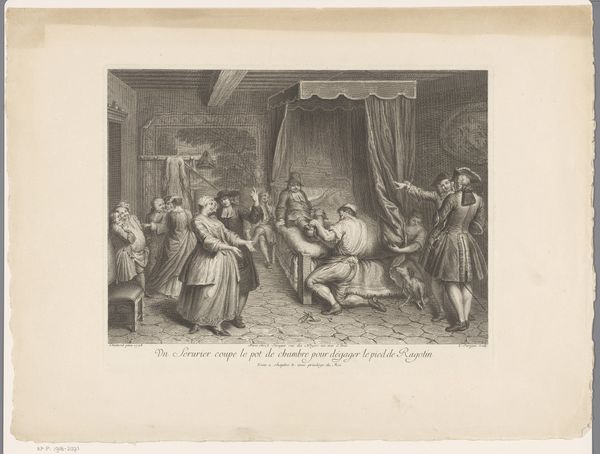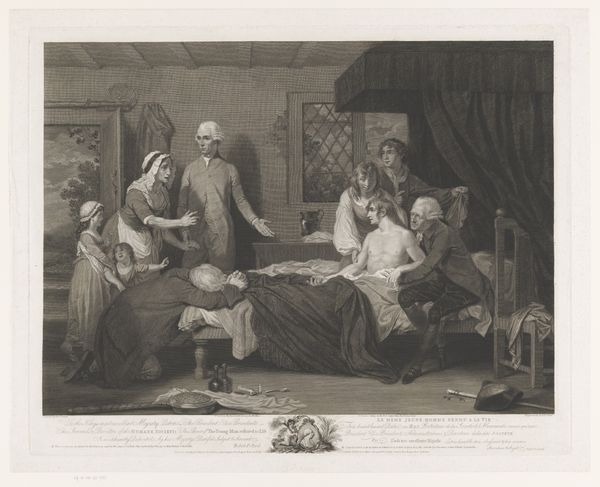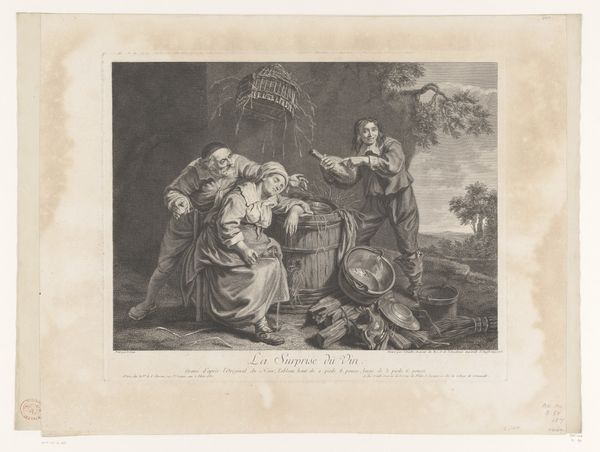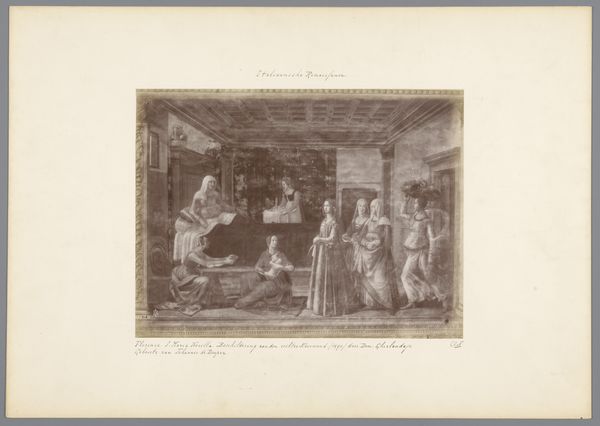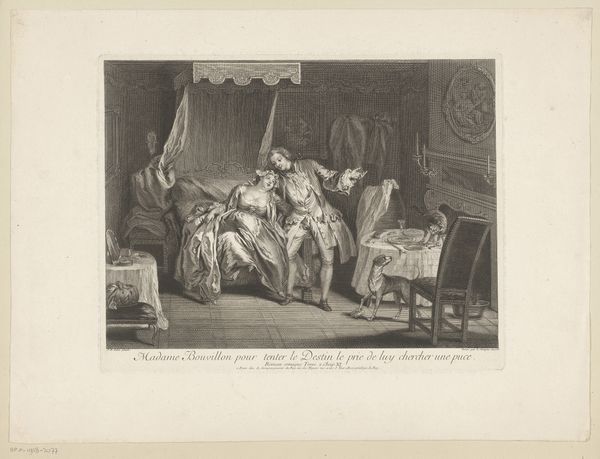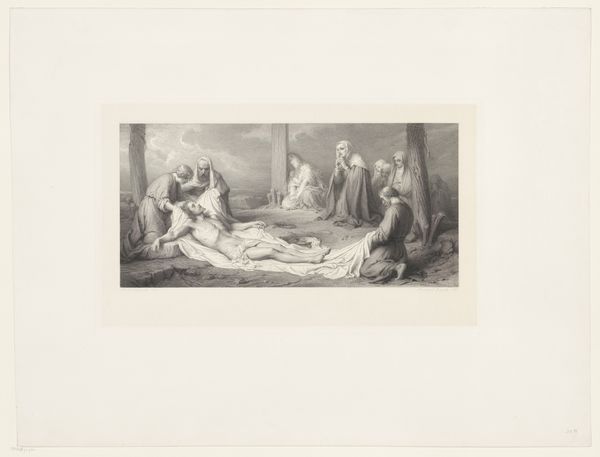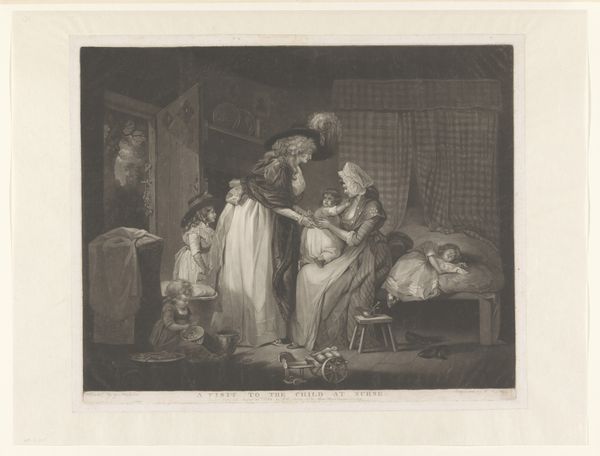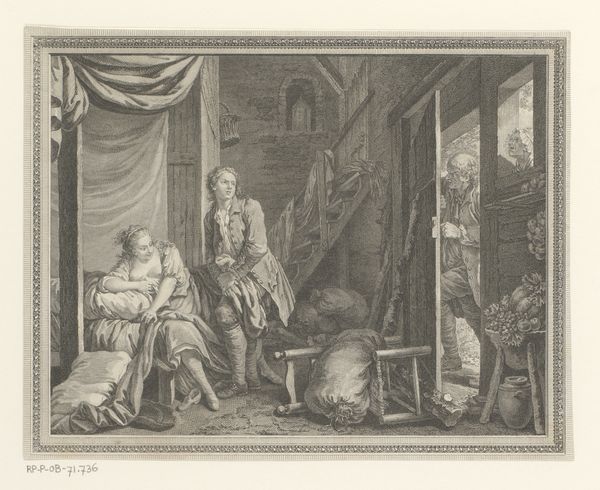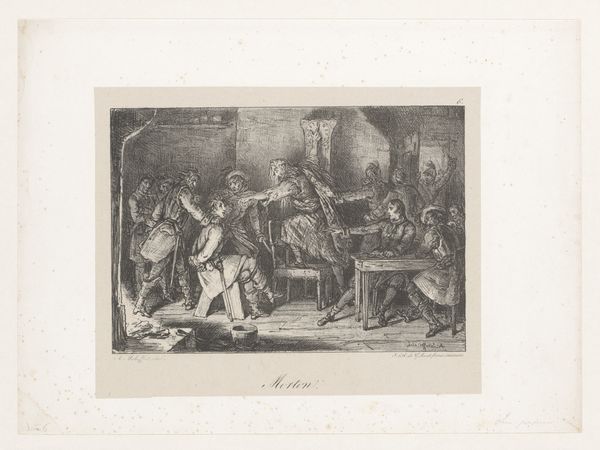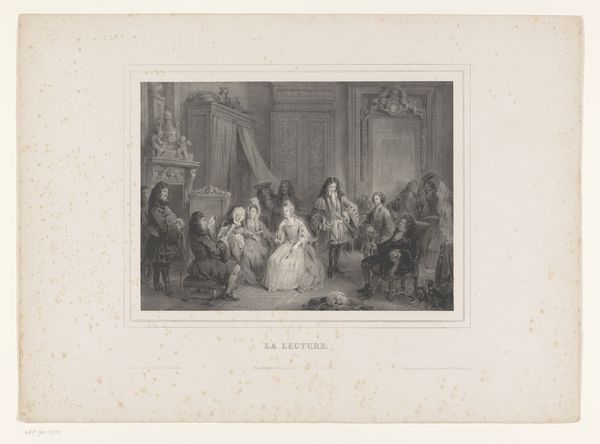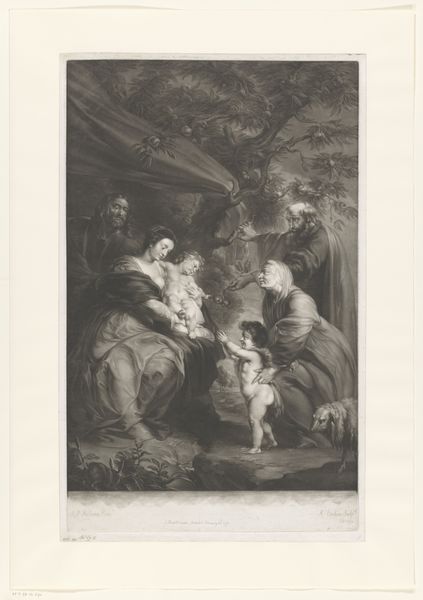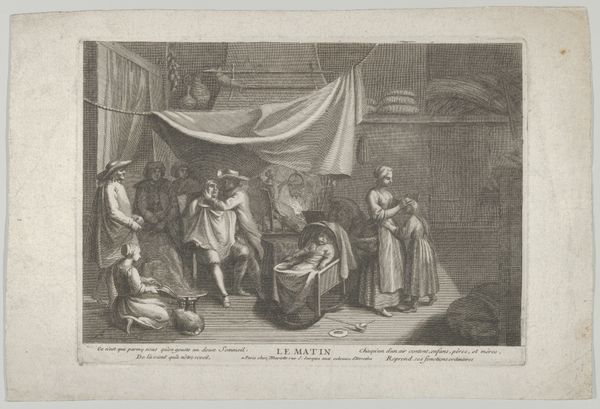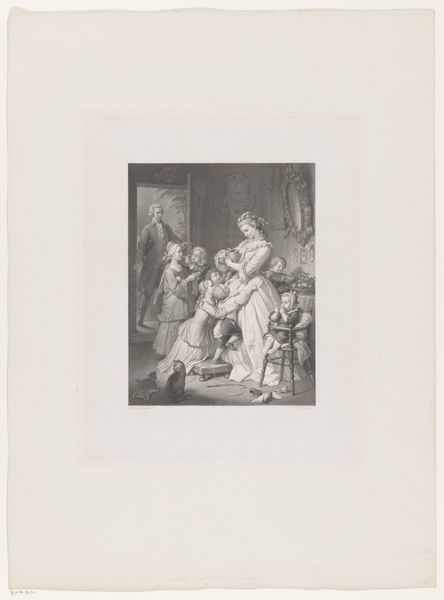
Dimensions: height 399 mm, width 505 mm
Copyright: Rijks Museum: Open Domain
Editor: This is Johann Georg Wille's "Sara stelt Hagar voor aan Abraham," from 1775. It's an engraving. It feels… domestic, but tense. What strikes you about it? Curator: The choice of engraving is significant. It was a reproductive medium, allowing for wide circulation and consumption. Look at the detail—the drapery, the rendering of skin. These techniques demanded skilled labor, transforming the biblical narrative into a commodity for bourgeois consumption. Consider, too, who had access to this image and its implicit social commentary. Editor: So, you are saying it is not just art, it is an item. What's particularly telling about this scene being rendered as a reproducible print? Curator: Exactly! Think about the implied viewers: those who could afford to buy prints. What does it mean to witness a powerful woman like Sarah “giving” her servant to Abraham through this specific material format? Is it about validating patriarchal structures through art? The print allows this moment of societal control to be circulated and, in a way, validated through material possession. Notice how the domestic setting itself, etched meticulously, emphasizes property and the patriarchal household. Editor: So, the very act of making it an engraving and selling it makes it part of the power structure of the time? Curator: Precisely. It's about labor, production, and the dissemination of ideology. Engravings made art more accessible but also controlled how stories were told and consumed. The artist isn't just illustrating; they are participating in a broader socio-economic system. Editor: I never considered the distribution as part of the artwork's meaning! Thanks for pointing that out! Curator: It changes the entire way one looks at art doesn't it!
Comments
No comments
Be the first to comment and join the conversation on the ultimate creative platform.
